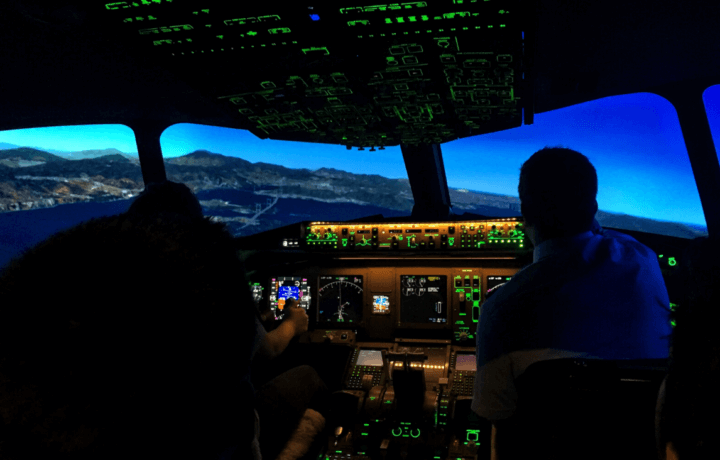Even before the novel coronavirus pandemic disrupted military training, the United States Air Force’s Air Education and Training Command was in the process of its next initiative to integrate modern technology and innovative strategies to transform how remotely piloted aircraft (RPA) pilots and sensor operators could be trained.
AETC
The Air Education and Training Command (AETC), headquartered at Joint Base San Antonio-Randolph, TX, was established and activated in January 1942. It is the second oldest major command in the Air Force, and its training mission makes it the first command to touch the lives of nearly every member of the service. Today, AETC is responsible for recruiting, technical training, flying training, and the continuing education of each generation of Airmen.
Training Builds on Current RPA Capabilities
Current RPA training has been largely focused on having students learn the fundamentals of flying in a simulator and then following up on T-6 Texan II instrument training. The Beechcraft T-6 Texan II remains the primary platform for basic pilot training in the Air Force, the U.S. Navy, and USMC as well as by air forces around the world.
The RPA initiative is taking a cue from the Pilot Training Next (PTN) program, which is now reimagining how Airmen can learn. It utilizes emerging technology to make the training faster while fostering deeper learning. The technologies include virtual reality (VR), artificial intelligence (AI) and data analytics, which can be tailored to the training environment and individual student.
“Building off the T-6 UPT model has left little flexibility for the ever-changing needs of the Air Force,” said Maj. Adam Smith, director of the RPA Training Next (RTN) program, via a statement. “Technology is changing the way we live and learn and it has opened up many opportunities to improve training so we can develop the Airmen we need. Our program is a Learning Next initiative aimed at helping us examine how the command has historically trained Airmen, then explores alternatives to potentially modernize training practices.”
AI Goals
The RTN team is working to better incorporate AI capability into the program, in part to build trust in AI principles early in an Airman’s career so that such capability can be used throughout one’s entire career. This includes the same AI software that is currently embedded in the MQ-9 Reaper simulator. The plan is to export that software to combat squadrons so they have access to the same AI instruction and other AI instructor aids in the simulators for continuation and mission qualification training.
In addition, the program is meant to expose trainees to the vast amount of data being presented to an RPA pilot – much of which manned-aircraft pilots may not typically be exposed to. Also, the program is aimed to help trainees with task management capabilities.
Tailor-Made Program
The move to a competency-based training concept enables RPA students to undergo a “tailor-made” program that is based on their respective capabilities and needs rather than the entire class following a rigid construct. RTN is thus an umbrella with a number of programs within it.
This differed from the old version of RPA training, which only included two phases – where students went through RPA Instrument Qualification Courses where they would fly a T-6 Texan II simulator and be trained on instruments, followed by students going to the RPA Fundamentals Course, which was an academic study that had a mission-focused simulator where the students would fly virtual sorties to get used to building operational missions. That would help them learn to control an RPA.
Under the RTN revamp, the team is taking two courses and merging the various aspects into a single RPA Course. The first class will begin later this year at the Joint Base under the 12 Flying Training Wing.
“We are moving out the experiment phase and connecting different methods of competency-based learning for the students to create a holistic RPA training-pipeline experience,” added Smith. “RPAC is a missionized course, which means there are more defined reasons for why students are accomplishing certain training objectives. Students are not just flying a teardrop hold as the FAA might ask them to do, but there is a reason why they are holding – it’s to talk to a joint terminal attack controller on the ground, or to avoid a threat, or wait to get clearance.”
It is just the RPA pilots that will experience the new training techniques. Modifications have been made for the T-6 simulator from the sensor operator perspective, and they are getting exposure to topics that include crew resource management.
Continuing Training
After completing the “undergraduate training,” those pilots on the MQ-9 Reaper track will be sent to a formal training unit – such as the one at Holloman, March Air Reserve Base in California – while students on the RQ-4 Global Hawk track will complete their formal training on the platform at Beale Air Force Base in California.
“MQ-9 pilot or sensor operators will focus on the more Combat Air Force style skills, like employing munitions and working with JTACs,” Smith said. “The RQ-4 track will focus on the high-altitude intelligence, surveillance and reconnaissance, and transoceanic crossings, which are more in line with that platform’s mission sets.”
The entire training process is expected to last about a year, but there are breaks in training that could make the process take longer, which is a part of what RTN is trying to fix through seamless transitions throughout all phases of training. In addition, that baselining of technology across all phases is a major tenet of the RTN program.
“The idea is to keep the same levels of technology for RPA students across both undergraduate and formal training,” Smith said. “This allows the pipeline to have a seamless transition in all phases of training.”




